Many third-world country inhabitants have never been required to prepare a meal without a gas or electric stove. But for centuries, people have been baking bread, preparing fish, making jerky, cooking meat, and even making pizzas without electricity.
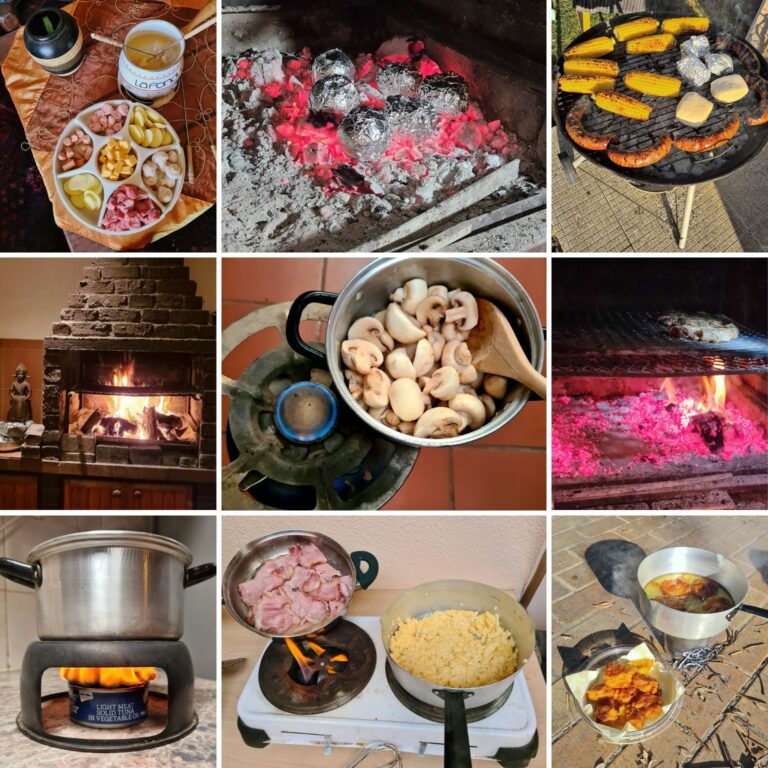
As a keen outdoors woman/hiker/climber/canoeist/horse trail rider, I have often had to do without electricity for weeks at a time.
With the fuel and gas prices soaring, many people have been looking for off-the-grid ideas to cook and do other things without too much expense.
I am going to give you some really good, effective ways to cook off the grid.
By the way, I home-schooled my three kids and they loved learning survival tricks. Cooking during our many hikes and outdoor activities was always fun when supper time came.
So, if you are home-schooling your kids, pay attention to some fresh, fun, important life lessons.
How Did People Cook Before There Was Electricity?
Where our meals are planned around our work hours, studies, kids’ schedules, and life in general; hundreds of years ago, families planned their lives around their meals.
Because off-grid cooking took time to prepare a meal, everyone needed to be ready to eat as soon as the food was cooked.
Remember, there were NO microwaves to reheat food. I am hearing teenagers faint all over the globe reading that sentence. But that is right, there was no power, and no technology, and yet, they survived.
Homesteaders grew their own vegetables, raised their own animals for slaughter, and they kept their own goats or cows for dairy. They planted all year round with seasonable fruit and veggies.
They dehydrated, salted, or smoked their fruit, vegetables, and meat to last them through the cold winter months.
Fruit and vegetables were normally dried in the sun, while the meat was mostly salted or smoked to preserve it.
1. Drying / Dehydrating
Dehydrating fruit, meat, and vegetables is a very efficient way to make your food light for moving around and preparing off the grid.
To dehydrate food, you will need a low amount of heat and good airflow.
There are several methods to dehydrate food.
- There are portable dehydrators that rely on batteries or gas
- You can use a solar-powered dehydrator
- You can use a gas stove
- You can use a solar-powered stove
- You can hang meat, fruit, or vegetables from tree branches
- You can lay meat, fruit, or vegetables on a flat surface in a well-ventilated spot in the sun and just cover it with a mesh cloth
Dehydrating takes time, low heat, and ventilation. Dehydrating food maintains its nutritional value.
It is a very convenient way to cook off the grid. Once food has been dehydrated it can be eaten in its dehydrated state or rehydrated when needed.
Pros
- Makes meals portable
- Preserves food for longer
- Food can be rehydrated whenever needed
- Food can be served dehydrated at any time regardless of weather conditions
Cons
- Food can be monotonous and bland
- Relies on heat, ventilation, and time
2. Salting
- Meat is salted by thoroughly rubbing salt into the meat
- You will then leave the meat in a cool area such as a pantry or countertop where neither the sun nor golden retrievers can reach it (not the refrigerator)
- It should be stored in the salt for at least 28 days
- You should add salt at least 5 times during this process
- When the meat is completely dry, wash the excess salt off the meat
- Let it dry and bag it or leave it in the cool place to cure
Pros
- Meat is preserved for longer
- Meat is very portable
- Meat is very well seasoned
Cons
- Only meat can be prepared by salting
- Takes a long time
- Requires a lot of salt
3. Smoking
Smoking takes time but is certainly worth the time and effort.
- Hang the meat from rafters or racks in a closed-off building that will safely house a firepit
- Burn a wood fire in the fire pit
- Do not make a massive fire, you are looking for the smoke more than the heat
- Keep the fire going for a month with the door of the smoking room or building closed
- Use different types of wood as experiments; different woods give the meat different tastes
Pros
- Meat is well preserved
- Very tasty
- Taste can be manipulated by using different types of wood
- Food is portable
Cons
- Only good for meat
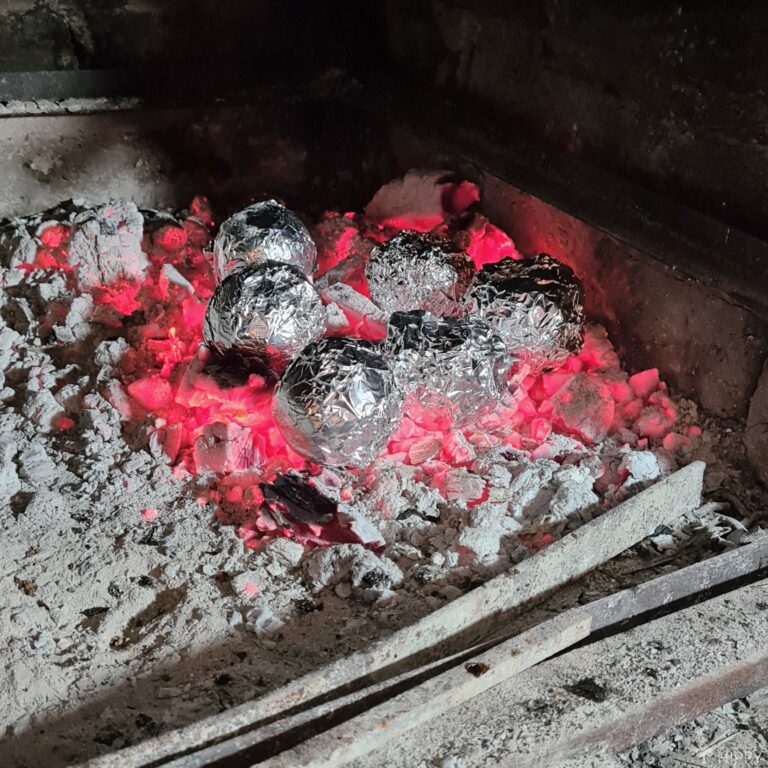
4. Cooking Over an Open Flame (Known as a Good Braai in South Africa)
The most obvious and accessible way of cooking off the grid would be over open flames.
Whether you are living off the grid, camping, hiking, or in a survival situation cooking over an open fire can be a fun, relaxing time to tell stories.
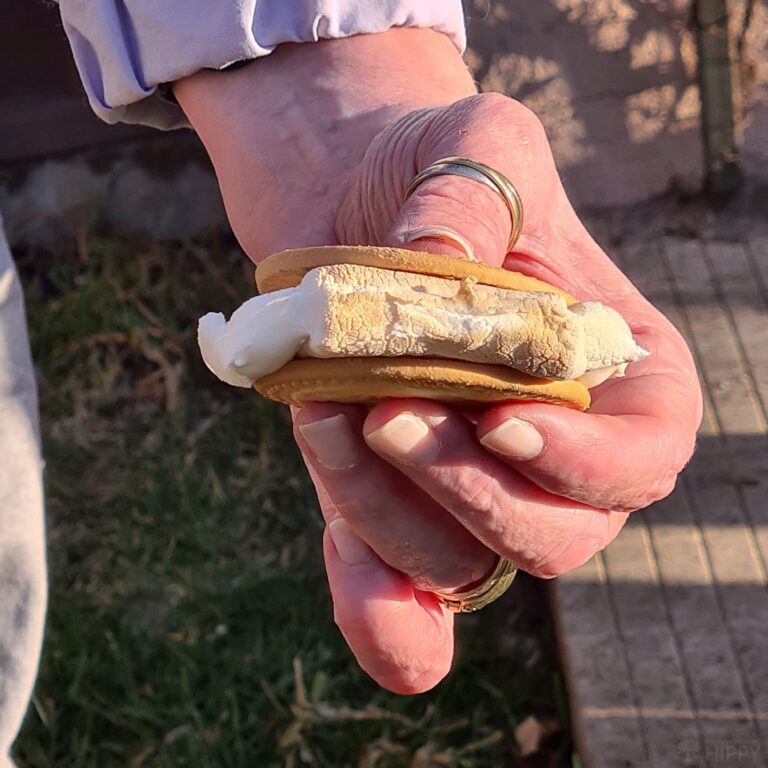
Cooking over a fire is a very convenient way to prepare food. However, you will need to build a fire to cook one meal at a time.
But there are dangers that come with a fire. There are several safety measures to have in place when cooking over an open flame:
- Make sure the area you intend to build your firepit in is cleared of all brush and that the surrounding area is clear
- Make sure that you have clear soil or water to put the fire out; if you are using soil, it must be clear of any branches, leaves, or other flammable items
- Use rocks to form a circle around your fire; you will need the rocks to be high enough so that your food does not become part of the fire
- Using the elevated rocks spear your food or place a metal grid balanced on the stones and let the food sit above the heat once the flames have burned lower
- Remember, never to leave an open fire unattended; teach your children fire safety rules; ensure the fire is 100% out before you move on or go to sleep
Pros
- Very tasty
- Can cook almost anything
- Great for warmth
- A great social opportunity for family and friends to gather around
Cons
- Requires wood, charcoal, or briquettes
- Takes time to build up the fire and to then let it die down enough so that food is not burnt
- Dangers associated with an open flame
- Risk of fire spreading to the surrounding areas if safety precautions have not been taken
5. Burying / Ground Oven Known as Pachamanca
Often the best ideas for living off the grid come from third-world countries. When it comes to cooking, third-world countries have some clever techniques. In Peru, cooking underground is called pachamanca.
The oven is dug into the ground, it is large enough to contain hot rocks as well as the meat and vegetables you are roasting.
Volcanic rocks are heated in a fire (normal rocks will crack) and are placed in the hole with the food and the hole is closed.
An hour later, the food is ready.
Pros
- Tasty food
- Versatile
- Can cook large cuts of meat and whole vegetables like whole pumpkins and root vegetables like potatoes
- Safe to leave unattended
- Cooks quickly
Cons
- Uses volcanic rocks only
- You have to first heat the volcanic rocks in a fire before placing them in the underground oven
6. Rocket Stove
Rocket stoves or ovens are great for off-grid cooking as they are fully portable and use branches, small wood scraps, small pieces of wood, twigs, or almost any other small combustible material.
Rocket stoves can be used to bake, cook, or even heat water. A rocket stove can burn up to 15 hours on 30 pounds of fuel (depending on what is used as fuel). Small pieces of wood will burn longer than leaves.
Rocket stoves are made of two chambers that are connected in an L shape. The fuel is burnt in the horizontal, combustion chamber that is exposed to a steady air supply.
The vertical chamber is insulated and sits on top of the combustion chamber. It is open on top with ‘legs’ to balance a grill, plate, wok, or oven.
The flames and heat from the combustion chamber is pushed into the vertical chamber by the airflow raising the temperature to 140 to 194 degrees Fahrenheit.
Pros
- Uses natural fuel like twigs or small pieces of wood
- Very tasty
- Does not need much fuel
- Can cook, boil, roast, and bake
Cons
- Requires steady, continuous airflow
- Must be supervised
7. Propane Gas Cookers
If you want to cook off the grid where renewable energy is not a steady, reliable option, propane is a very good option.
Propane stoves with ovens are readily available, prices vary from similar to more expensive than electric stoves; however, long term, gas is significantly cheaper than electricity.
Portable propane tanks are available, but they are problematic because of the problematic issue of hauling tanks up and down to have them refilled. They are also very heavy to move.
Stationary tanks are more practical as they hold more fuel and refilling is done by a delivery service.
Pros
- Cheap to run
- Reliable stove
- Function the same as an electric stove and oven
Cons
- Tanks are heavy
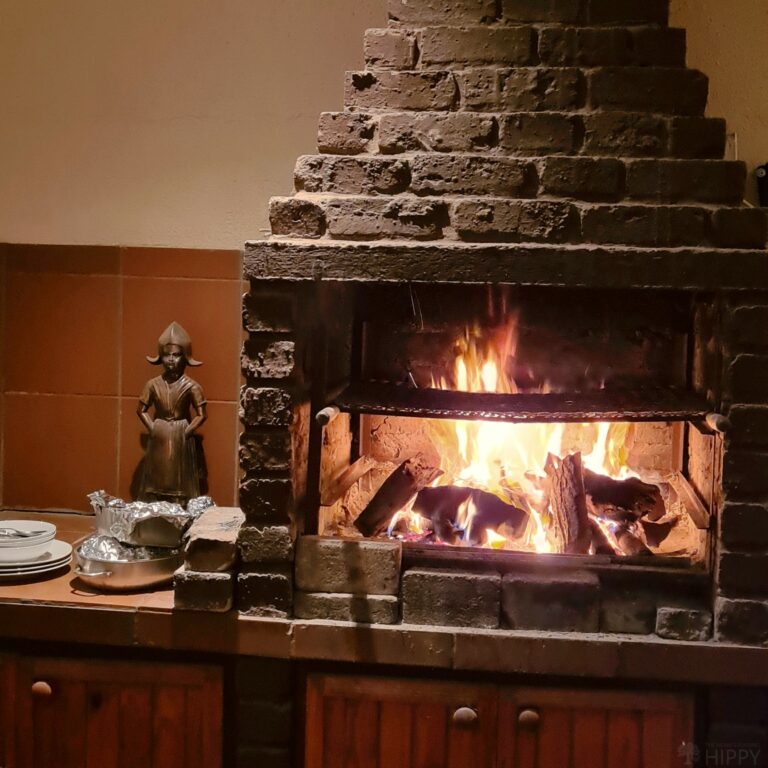
8. Brick Fireplaces
I have an indoor fireplace (not the kind you find in a living room but in a second, tiled living room) made of bricks.
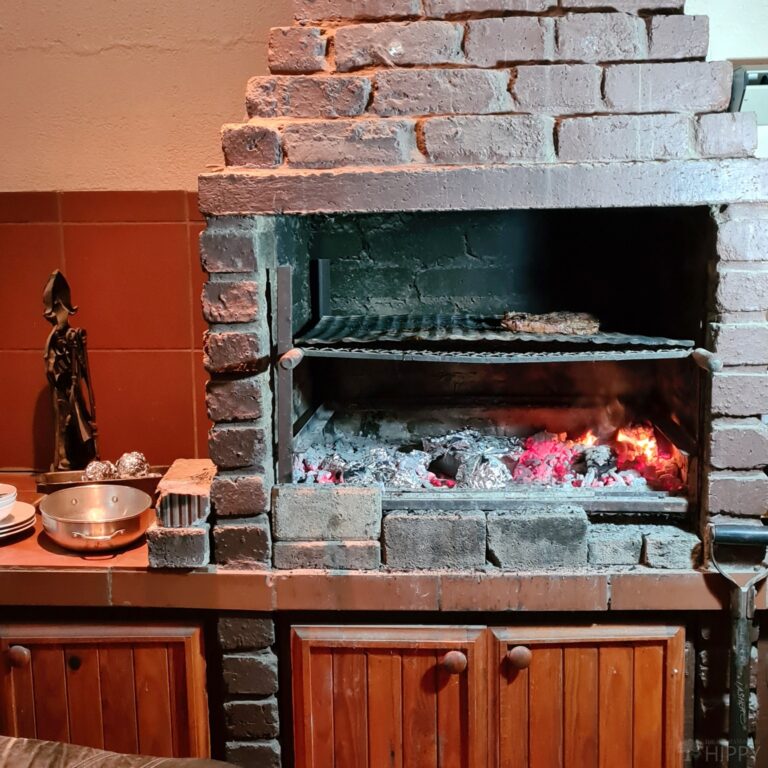
We often cook meals in the fireplace, and it is really a gathering place for the whole family to gather around, enjoy a glass of wine, and check in with each other.
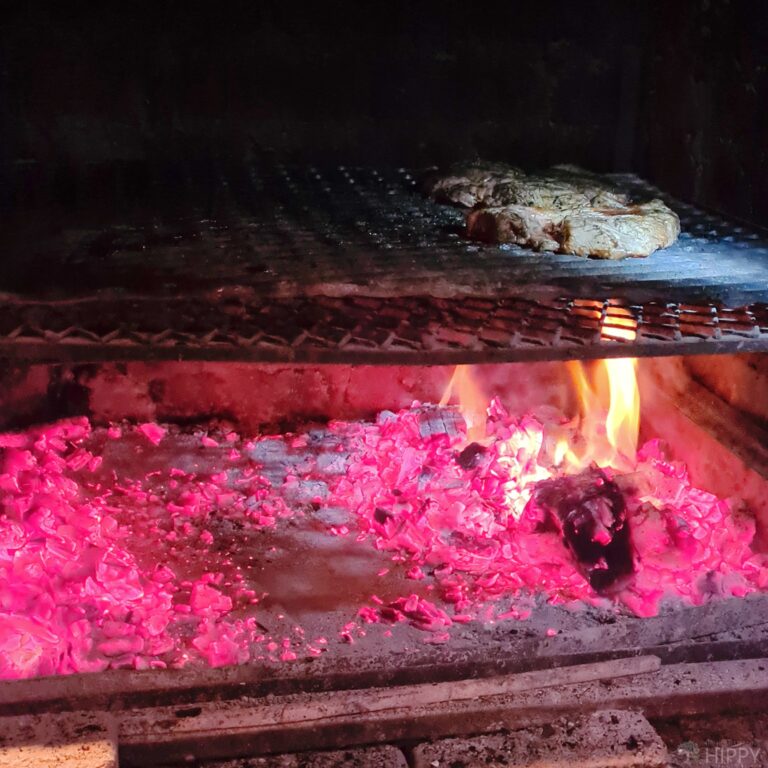
Heat can be retained easily, and while cooking on a brick fireplace, you can very efficiently warm up your home.
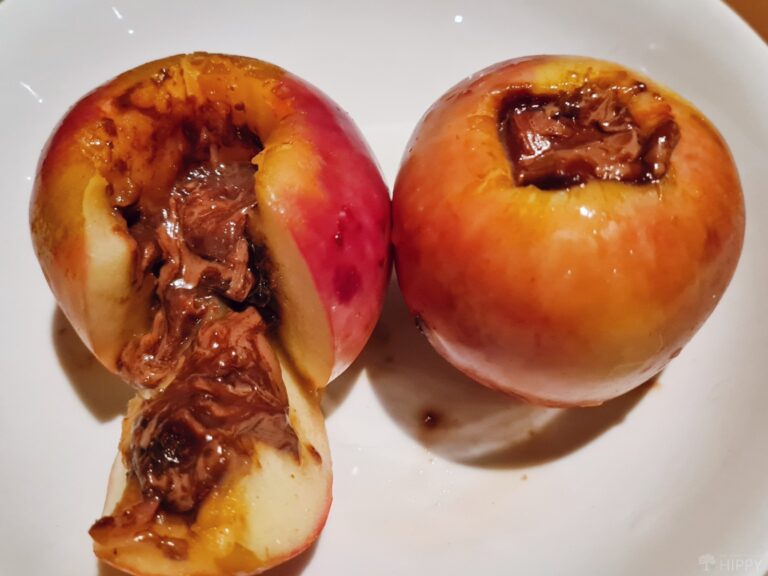
A lively fire is a great way to cook meat, cook vegetables, cook roasts, or even make toast. If you want to boil water, cook potatoes, make soup, or make a stew a smaller fire that burns for longer works well.
Pros
- Very tasty
- Can cook anything
- A gathering place for friends and family
- A good heat source
Cons
- Must be attended to
- Requires good ventilation if indoors
9. Dutch Oven
Early pioneers designed and perfected the art of cooking in a Dutch oven.
A Dutch oven is designed with a space beneath the cooking oven, and a space on top of the oven, to build and maintain a fire that will heat the oven from the top and the bottom.
Essentially, this was the birthplace of modern-day ovens with elements on the top to grill, the bottom to simmer, and both top and bottom to roast, bake, make bread, and even pizza.
A Dutch oven is very effective for roasting large, tough cuts of meat like pork shoulder, lamb roast, or brisket.
Original Dutch ovens were made out of cast iron, but the design grew with the ingenuity of people over the years.
The concept is simple, build a structure (most people use bricks as they last longer, retain heat better, and are safer, but you can build a Dutch oven using good quality metal) that has a small opening to manage your food as it cooks while you maintain the fires on top and on the bottom shelves.
Bricks also retain heat for longer giving your bread the time to rise properly and bake to perfection.
Pros
- Can be used to cook, roast, and bake
- Safe to leave unattended – but supervise children as the iron can get hot
- Tasty meals
- Can cook a variety of food at the same time
- Reliable
- Can be used indoors and outdoors
- Small portable ovens are available for hiking
Cons
- Uses wood or charcoal to preheat the oven
- Wood and ashes must be cleaned out of the oven before the oven can be used
- Takes time to prepare and cook
10. Solar Ovens
A box solar cooker is either made from an insulated metal or wooden box that is painted black on the inside to absorb more heat. The inner box is insulated with a Thermocol layer.
The box has a cover that is made of 2 sheets of toughened glass that are held together by an aluminum frame.
There is a mirror that is attached to the box with hinges. The mirror reflector can then be positioned at any angle to allow reflected sunlight to fall on the glass cover to the box. Blackened aluminum containers are kept inside the box.
When the solar cooker is placed in the sun, the beam of the sun is reflected into the box through the glass sheet.
The temperature inside the black box reaches around about 212 degrees Fahrenheit (100 degrees Celsius).
The power of the sun is harnessed and combined with a blackened box, the generated heat is absorbed by the food, cooking it. You can even make hard cooked eggs with it.
Solar cookers have pros and cons.
Pros
- No fuel expenses, fuel is free
- Easy to use
- Environment friendly
- No nutrients are lost
- You can use a solar cooker to dehydrate food
Cons
- Cannot be used at night
- Cannot be used in bad weather
- You will need to rotate the box to match the suns movement
- Takes longer to cook
- Cannot be used to fry food
It is really easy to make your own solar oven. Here is a guide to make your own solar oven:
11. Hot Box
In many third-world countries (many countries in Africa), families use hot boxes to cook their food.
A hot box does not cook food from start to finish, but it does cut down on the amount of fuel needed to cook the food.
Many Africans live off of a diet of rice or ‘pap’ (a thick globular dish made of corn meal; not finely ground but also not chunky).
The food is partially cooked on an open fire – or for the lucky, a gas or biofuel stove – and then placed in an insulated container that closes with an insulated lid.
The residual heat from the stove or fire is trapped in the hot box and the food carries on cooking until complete.
Food can be kept warm in a hot box for up to 8 hours; the temperature inside the hot box reaches approximately 133 degrees Fahrenheit.
Hot boxes can be used to finish cooking grains, veggies, and soup without using valuable fuel, or it can be used to culture homemade yogurt, and keep drinks, dairy products like cheese and yogurt, and picnic snacks cool.
Pros
- Cheap
- Stays hot for up to 8 hours
- Versatile
Cons
- Cannot cook large, tough cuts of meat like roasts
- Takes time to prepare
12. Butane Gas Stove
Butane gas stoves are very popular for outdoorsmen as they are cheap and lightweight. They can be stored for a long time for use in emergency situations.
They cook with a cooktop only.
They are great for emergencies (when you run out of whatever fuel you normally use), bug-out bags, or being mobile in the great outdoors.
Pros
- Smaller and lighter than propane stoves
- Can be used indoors and outdoors
- Takes less space to store a container than a propane canister
- Not terribly expensive
- Not as toxic as propane
- Efficient
Cons
- Needs good ventilation
- Not effective in very cold weather
- Safety precautions must be adhered to
13. Kerosene
Kerosene stoves are very cheap and are therefore popular in third-world countries.
The stove consists of a fuel holding tank, and a wick that draws the kerosene up to heat the cooking platform.
It must be noted that if you wish to use a kerosene stove, you can only use it outdoors as it does produce carbon monoxide which is deadly.
Pros
- Cooks quickly
- Heat can be controlled
- Great for emergencies, camping, or living rough
- Burns cleanly
Cons
- Not a renewable fuel source
- Produces pollutants
- Can be dangerous if not used properly
- Cooker nozzles can get clogged up by soot
- They use dirty fuel that does not burn completely
14. Barbeque Grill
Barbeque grills are so much more versatile than the average Joe thinks. They can be run off gas, charcoal, or wood.
They do more than just grill steaks. They can be used to boil water, cook vegetables, you can use pots and pans to cook up stews or make soup, can smoke meat, dehydrate meat, vegetables, and fruit, and you can even bake on a barbeque grill.
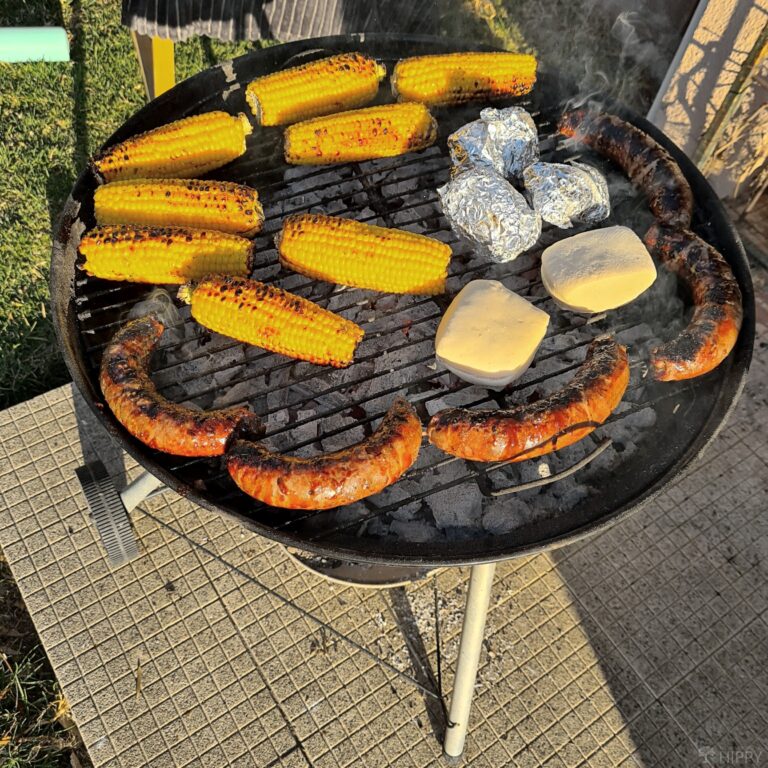
A barbeque grill can be fueled by gas or charcoal.
Pros
- Very tasty
- Charcoal gets hotter than gas
- Cheaper if you go with the charcoal grill
- Gas has better temperature control
- Reduces the amount of fat in your food
Cons
- Messy to clean
- Dangerous if not used properly
- Must be supervised
- Takes time to heat up
- A gas grill can be expensive
- Takes up space
- Needs proper ventilation
- Not convenient in cold or wet weather
- Can get very smoky
15. Solar Fresnel Cooker
A Fresnel lens is a flat, plastic magnifying glass that has concentric circles on the back side of the lens.
The lens is mounted on an adjustable frame. The lens is angled toward the sun to reflect the sun’s heat into the pot or pan.
The Fresnel cooker heats and can cook food very quickly, and can be used to cook, heat, roast, or bake.
Pros
- Renewable fuel
- Inexpensive
- Keeps nutrition in the food
- Environment friendly
- Versatile
Cons
- Be careful that your food does not burn as the heat is very intense
- Relies on clear weather and the sun
- Takes longer to cook
16. Wood Burning Stove
The great, great, great, great grandmother of modern stoves was a simple wood-burning stove.
Somewhat resembling modern stoves – or more accurately, modern stoves resemble wood burning stoves – these stoves were larger than modern stoves, made of thick cast iron, with a large belly to make a wood fire in.
They heated homes and brought families together for food, heat, and build strong relationships.
Many old homesteads still have wood stoves in them, and you can purchase them in specialized stores. But they are super easy to make without much material or labor.
Check out this incredibly creative way to build your own wood stove:
If you really want to go all in, this is the King of all Woodstoves:
Pros
- Efficient
- Heats very effectively
- Low emissions
- Uses little wood
- Great for heating a room
Cons
- Expensive
- Installation cost is pricy
- Takes time to learn how to use
17. Earth Oven
If you loved playing in the mud as a child, you will love making your own earth oven.
An earth oven consists of a hole dug in the ground, 24 inches deep.
Large rocks that have been heated are placed at the bottom of the pit, then smaller rocks that have also been heated are placed on top of the large rocks.
A layer of branches is placed across the opening with green leaves on top to trap the steam.
The food is laid out on the branches and then covered with a layer of leaves. This is covered with sand, making a dome over the hole.
An earth oven can be constructed with bricks for a more permanent solution to cooking off the grid.
An earth oven can reach up to 700 degrees Fahrenheit, extreme caution should be used when cooking.
Pros
- Easy to set up
- Heats up very effectively
- Can be made anywhere
- Can cook meat and vegetables
- Can smoke meat
- Can steam vegetables
- Can bake bread
Cons
- Takes time to prepare
- Takes effort to build
18. Cob Stove
Sometimes people confuse a cob oven with an earth oven but the two are definitely different.
Where an earth oven is underground, a cob oven is constructed above ground using rock, clay, empty glass bottles, and straw.
The oven is built above ground. A wood fire is made inside the oven and a wet wooden door is used to heat the oven and create steam in the oven.
Once the oven is properly heated, the burning wood and ash are removed from the oven, and food is then placed inside the oven with a wet door closing the oven.
A cob oven can be extremely hot, posing a threat of burns to users and requiring a learning curve to figure out when and how long to cook or bake. But the learning curve is definitely worth it!
Baking bread in an earth oven will make you want to swear off store-bought, or bread made in a conventional oven very quickly. It is decadent!
You will be able to cook, steam, roast, and bake delicious meals with rice, vegetables, meat, and even dessert in no time.
Here is a guide to what you can do in a cob oven and how to build your own.
Pros
- Great backup stove
- Low tech
- Built from cheap easy to find resources
- Can be built into the ground or above ground on a platform – a platform means less bending while cooking
- Runs on wood, therefore, fuel is readily available
- Tasty meals
- Tasty bread
- Environment friendly
Cons
- Requires a lot of maintenance
- Takes time and effort to build
- Fire and coal must be removed once the oven is properly heated
- Uses a lot of wood to heat up enough to cook or bake in
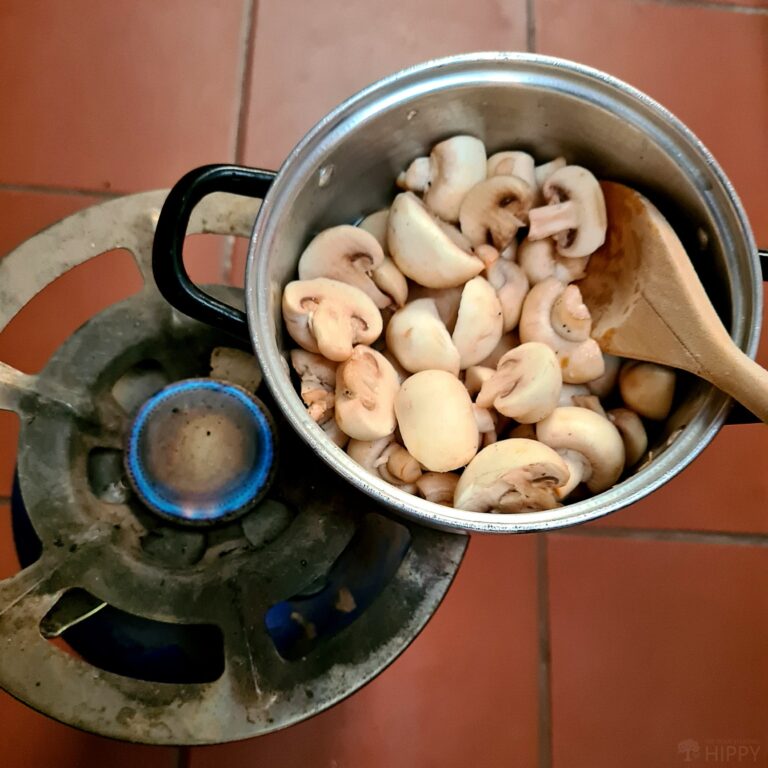
19. Camping Stove
Camping stoves are a short-term option for cooking off the grid. They are also more appropriate as an emergency stove as they are heavy and require you to take the bottles to be refilled as needed.
Pros
- Boils quickly
- Lightweight
- Portable
- Compact
- Easy to use
Cons
- Can be expensive
- Do not work in extremely cold weather
20. Tea Light Oven
If you enjoy making your own candles, you may consider a tea light oven. They heat up quickly and are surprisingly effective.
If you have any doubts about using tea light to cook, have a look at the Survival Moms guide to tea light ovens.
They do pose a risk of fire and therefore must be supervised, but they are surprisingly effective for cooking and baking.
Pros
- Inexpensive
- Easy to use
- Versatile
Cons
- Risk of fire
- Can only cook small portions
- It will require an infinite supply of candles if you want to use them long term
21. Volcano Stove
Volcano stoves are versatile, compact, portable, and can be used with briquettes, wood, pinecones, wood lump charcoal, or a propane tank.
This is an outdoor stove. Which can limit your cooking if you are using it to cook meals on a regular basis through winter.
It is a very efficient stove that can be used for cooking and baking just about anything. You can bake delicious bread and cookies in this compact, collapsible cooker.
Pros
- Lightweight
- Cooks quickly
- Effective
- Versatile
- Compact
- Portable
Cons
- Can be expensive to purchase
- Not as stable as other off-grid cookers
22. Hay Box
A variation to the earth cooker, the hot box, and burying or ground oven, a hay box uses hay to complete your cooking once it has been brought to a boil using fire or gas.
Once your food is boiling, it is transferred into a wooden box that is lined with hay. A lid is placed on the box and the heat generated from boiling the food is trapped by the hay to complete the cooking process.
Pros
- Uses less fuel
- Preserves nutrients
- Cooks quickly
- Easy to make
- Retains flavor and aroma
Cons
- The pot must be 80% full to be effective
- Bacteria can grow if left to cook for too long
23. Cooking on Your Car
No, I am not joking.
If you find yourself in a pickle, heat generated from your car’s engine is good enough to fry up some bacon and eggs, make a cup of tea, cook very simple dishes like ramen noodles, or heat through canned food.
Pros
- Can cook meat, vegetables, potatoes, rice, eggs, and more
- If food is properly wrapped in aluminum foil, all the flavor and nutrients are preserved
- Cooks quickly
- Easy to prepare food and drinks on the road
Cons
- If your car has exhaust problems, even properly wrapped food can taste bad from the fumes
24. Canned Heat
If you are looking for a short-term solution to cooking if you run out of gas, the weather is messing with your open fire dream, or you do not have a safe indoor cooker, canned heat is very handy.
When utilizing canned heat, fill the can with a flammable substance – depending on which brand or fuel you choose.
If you have ever been to a catered buffet, you will have seen the little cans under the trays of food that cook the food or keep it warm.
It is completely safe to use indoors. Just mind the kiddos. If you are enthusiastic, you can build an aluminum box to place the can inside to protect the kids and avoid accidents.
The can is placed under a stand with a grid of sorts above the flame to place your pot or pan on.
Food cooks quickly and you can make anything from soup to stew to T-bone steaks, and yes, that ever-important cup of tea.
Pros
- Heats quickly
- Portable
- Can cook a variety of meat and vegetables, and can boil water and milk for hot drinks quickly
- Safe for use indoors and outdoors
- Convenient
- Multiple cans (recommended that you use no more than two canisters per cooking surface) can be used to raise the temperature
Cons
- Requires proper ventilation
- Must be supervised due to fire risk
- Must be stored in a cool, dry place
- The flame must be properly extinguished by replacing the lid on the canister as the flame is not always visible and cannot be extinguished by blowing on the flame
- Temperature control can be tricky
25. Pizza Oven
Pizza ovens can really be used indoors or outdoors. The key is safety first – using an open flame or coals indoors is not a good idea – and good ventilation is essential.
Building your own pizza oven is really easy. There are plenty of designs on the internet. I really like this one:
The great thing about a pizza oven is that it is good for more than just making pizzas. You can also:
- Bake bread
- Roast vegetables
- Smoke meat
- Barbeque
- Slow cook meals
- Cook delicious stews
- Cook jacket potatoes
- Bake or grill fish
- Cook decadent hot desserts
Pros
- Works the same way a Dutch oven is used
- Versatile
- Easy to use
- Cooks great pizza with a crispy crust
- Great opportunity for socializing with friends and family
- Large cooking space
- Can be used to cook and steam meat and vegetables
- Bakes delicious bread, buns, and desserts
- Delicious flavoring of food
- Cooks quickly
- Uses wood or coal to heat
- Portable ovens are readily available
- Fairly easy to build your own
Cons
- As with Dutch ovens, once the oven is appropriately heated, you will have to remove burning wood and ashes before placing food inside
- Very expensive if you buy ready for use
- Expensive if you are paying for installation
- Takes up space
- Because the oven gets very hot, there is a risk of burns to chefs or inquisitive kiddos and pets
26. Hobo Stove
A hobo stove is the ultimate survival stove for those who do not have access to gas, electricity, or other fuel.
Made from a discarded tin can, tonight’s dinner can be tomorrow’s stove.
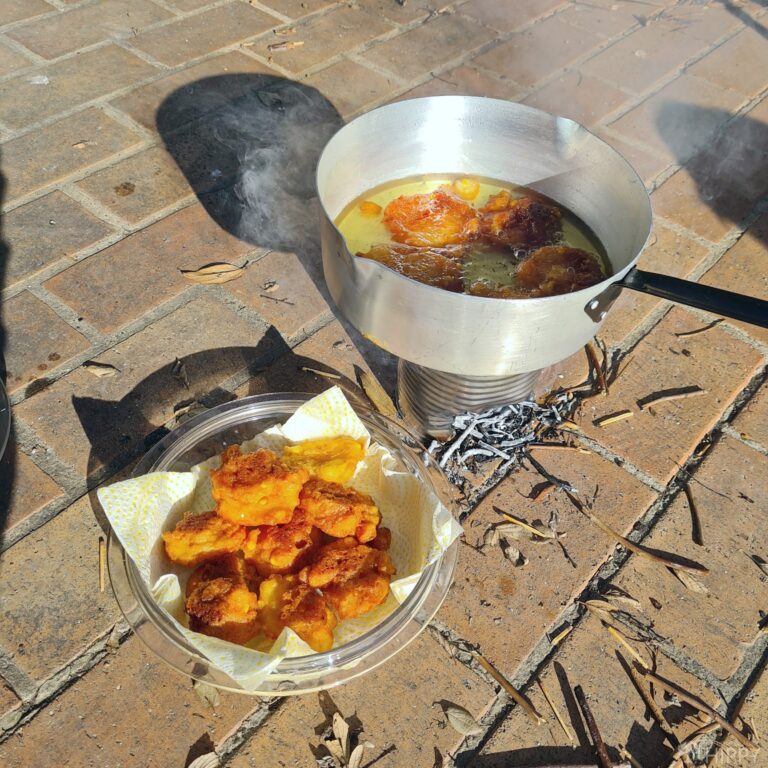
It is super easy to make and use.
Take a discarded tin can – an old instant coffee can, or any other can that had food in it – is suitable. Do not use cans that have chemicals or paint in them.
Cut the top of the can off and punch holes around the open end of the can for ventilation. Once this is done, make a hole big enough to fit small twigs or small pieces of wood through into the can at the base of the can – the closed side of the tin.
Start a fire in the can and turn the can so that the wind will enter through the bottom hole forcing the heat up. Place a pan or a can of food on top of the stove can – with a small opening on top of the can of food to vent steam.
If the fire is too hot, turn it so that less air enters through the fuel hole.
We crush the can that has been used as the stove and carry it out for recycling and use the can from last night’s dinner as the stove for the next meal.
Pros
- Very portable
- Can be recycled
- Convenient
- Anything combustible can be used as fuel
- Can be used to boil water
Cons
- They can get very hot, be careful not to burn yourself
- If you are not careful about the can – what was in it – your health can be compromised
- Do not use treated lumber, it will carry carcinogens
- Cannot cook big meals
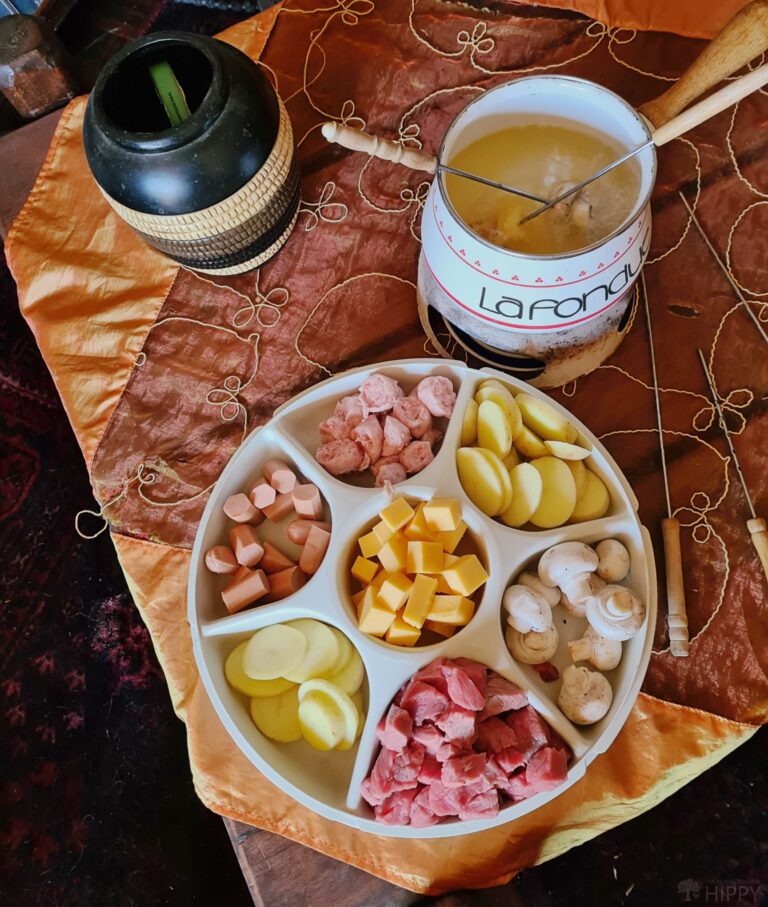
27. Fondu
A fondu set can also be used to cook up soup, stews, vegetables, or boil water. Biofuel or alcohol can be used to safely cook food.
Pros
- Takes up little storage space
- Great for intimate conversations with friends and family
- Provides intimate light
- Heats quickly
Cons
- Must be supervised due to fire risk
- Most cookers are not suitable for large gatherings
- Can be expensive
28. Wonder Oven
A wonder oven is similar to a hay box or a hot box in that food needs to be partially cooked and then placed into the box to finish cooking.
The difference is in the insulation. The insulation is made of small beads in a cloth bag. The heated pot is closed and placed inside the bag holding the beads.
It is great because it requires no supervision. The oven continues to cook food for up to 15 hours.
It is perfect for making soup, casseroles, stews, vegetables, and rice.
Pros
- Portable
- Can be used unsupervised
- Cooks for a long time
- Keeps food hot
- Versatile
Cons
- Be careful not to spill the food on yourself as you can get burnt
- Bulky
- Takes time to learn how long you need to cook different food
- Food must be partially cooked
- Easy to spill food when placing it in the pot
29. Flat Rock Frying
Flat rock frying is a very simple way to cook over an open flame.
Find a flat rock and place it in the middle of an open fire. Keep the fire going, your rock will be hot enough to cook on in an hour.
You can fry directly on the rock – clean it before you put your meat or vegetables on it – or you can place canned food or food in a pot on top of it to cook.
Pros
- No need for a grill
- You do not need to carry it around
- Can be reused
- You can boil water for… TEA
Cons
- If you are on the move, you need to find a new rock at each place you stop to cook
- Do not use a rock that has been near a water source like a stream or dam; stones from water sources can overheat and explode
30. Roasting Over Open Flame
Roasting over an open flame is a simple way to cook meat, corn, or potatoes. All you need is a skewer or stick that you can pierce through the food.
Once your food is skewered, you just hold it over the flame rotating it so that the food cooks through evenly.
Pros
- Skewers do not take up space
- Very relaxing to sit by a warm fire, wine in hand, alone or with friends
Cons
- Limited to food that can be skewered
31. Folding Pocket Stove
A folding pocket stove – I recommend the Esbit Ultralight Folding Pocket Stove – has been the go-to folding pocket stove since World War 2. It was designed to be a survival stove for soldiers to boil water and cook food or make soup.
It can be folded down to fit into a coffee cup. It is a very good choice if you are looking for an emergency stove or if you are hiking or on the move.
It is suitable for boiling water and cooking with pots and pans.
Pros
- Compact
- Lightweight
- Uses lightweight fuel tablets
- Boils 500ml in 8 minutes
Cons
- Cannot cook big meals
32. Cold Smoking
Cold smoking is similar to traditional smoking in that it needs a smoke. But is very different in the temperature needed to smoke.
Traditional smoking is done from 225 degrees Fahrenheit to 250 degrees Fahrenheit. Cold smoking is done at 90 degrees Fahrenheit.
Meat, cheese, nuts, tofu, some vegetables, and hard-boiled eggs can all be cold smoked. If you are smoking meat, it should first be cured to get rid of bacteria.
If you are smoking in winter, cold smoking is more suitable than traditional smoking.
Pros
- Needs little attention
- Uses less wood
- Preserves food for longer
Cons
- Can take a few hours to several days to smoke
33. Spider Dutch Oven (Known as a Potjie in South Africa)
A spider Dutch oven (potjie) is a cast iron pot exactly like the stereotypical witches’ brew pot.
The pot is placed in a fire pit and the fire is kept up as a slow steady heat source. Food is slow cooked leaving loads of time for relaxing with friends and family.
These come in many sizes. The size of the pot will determine how long it will take to cook your food.
The potjie, is a very Afrikaans method of cooking. People gather around and spend all day – sometimes all night too – drinking, talking, laughing, and bonding while their stew – known as potjie kos – cooks.
English speakers normally shake their heads, put their food in a normal aluminum pot, stick it in the same fire and eat within an hour.
Anything you can cook in a Dutch oven can be cooked in a spider Dutch oven. Short ribs, bread, soup, stew, casseroles, vegetables, roasts, and even macaroni and cheese cook to perfection.
Pros
- Very tasty meals
- Great for making stews
- Can be used to boil, steam, and smoke
- Can cook just about anything
- Great social opportunity
- Can cook over an open flame or any other heat sources
- Multiple sizes available
Cons
- Take long to cook
- Very heavy
- Gets very hot, risk of burns to people and pets
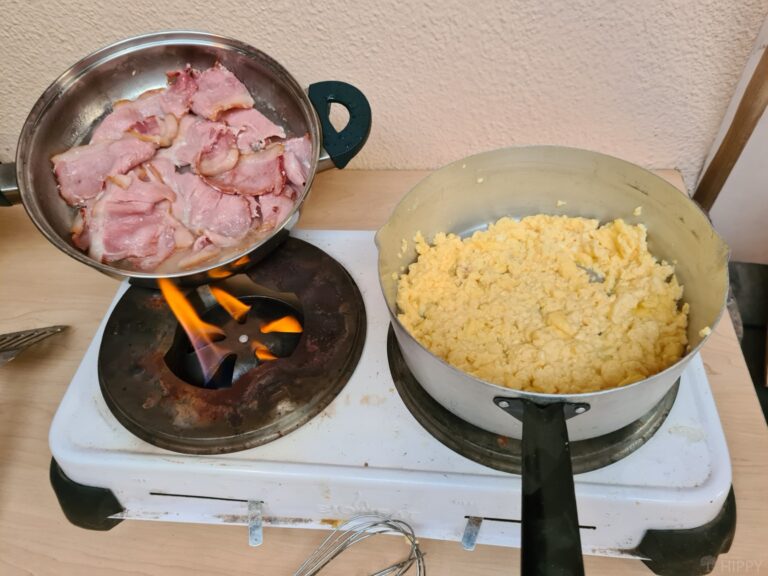
34. Bio-Fuel Stove
South Africa is currently renowned for electrical blackouts in the name of “loadshedding” because the electrical supplier cannot keep up with the demand. This is very annoying as power outs occur at the most inconvenient times.
We are left to revert to simple off-the-grid cookers for easy meals and… TEA!
Our go-to for indoors is our biofuel stove. It is easy to use, does not require good weather, it is super easy to prepare, it does not emit smoke, and, best of all, it uses a clean renewable source of energy making it very environment friendly.
We cook hot dogs, noodles, spaghetti, vegetables, and minute or tenderized steak on ours, and also use it to make tea or coffee and to boil milk. When my children were babies, we left ours on our kitchen counter to make formula in a pinch.
Pros
- Easy to use
- Environment friendly
- Heats up quickly
- Does not take up a lot of space in a cupboard or on the counter
- Very cheap
- Can cook a good range of dishes
- Safe to use indoors
Cons
- Cannot cook large, tough cuts of meat quickly
- Cannot oven roast
- The stove has roughly a 5 – 10-year shelf life
- No heat control
35. Alcohol Stove
Alcohol stoves are preferred by many over gas stoves. Alcohol stoves can be fueled by denatured alcohol, pure ethanol, alcohol, or pure methanol alcohol. All of these burn very cleanly.
They are great for heating canned food, cooking ramen noodles, cooking basic stews and rice, and boiling water.
Pros
- Burns cleanly
- Compact
- Easy to transport
Cons
- Cannot cook big meals
- Size of the pot determines how long it will take to cook, the smaller the pot the quicker the meal
- No heat control
36. Tuna Can & Toilet Paper Stove
Yup, it is what it is.
Open a can of tuna in oil (or anything else that is oily), and place 3 pieces of toilet paper over the top of the tuna forming an airtight seal. You then light the toilet paper and place a pot stand over the fire and cook over the flame.
The tuna will cook at the same time as the food you are cooking over the flame.
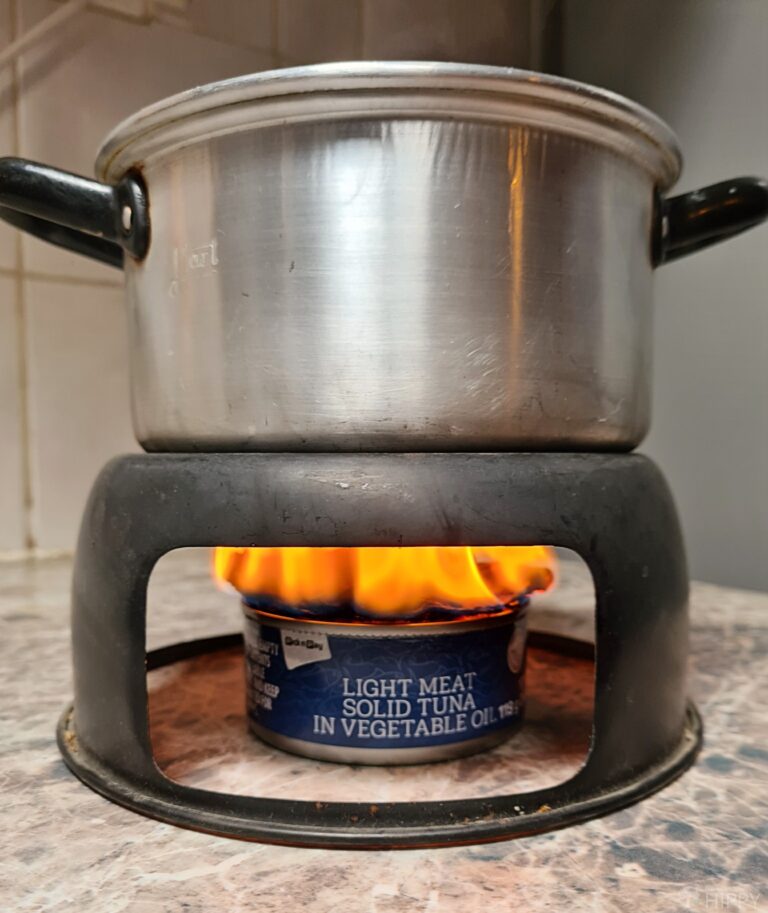
The flame uses the oil in the can to fuel the fire. The fire can burn for 25 minutes.
This stove is handy for boiling water, making soup, cooking rice, pasta, vegetables, and light cuts of meat.
Pros
- Good emergency light
- Very portable
- A good heat source
- Burns for a long time
- Easy fuel supply limits what you need to transport
Cons
- Cannot cook big meals
- Cannot control the heat
37. Buddy Burner
A buddy burner works similarly to a tuna burner. It takes some time to prepare, and you cannot cook food in the fuel can.
It is easy to make and very effective.
Here is how to make your own buddy burner:
- Cut strips of cardboard into thin strips the height of a tuna can
- Cut across the corrugated cardboard exposing the holes on the sides
- Take an empty tuna can
- Roll the strips of cardboard tightly and then place them snugly inside the empty tuna can
- Melt wax or butter in a double boiler
- Pour the melted wax or butter over the cardboard filling all the holes but leaving the tips exposed to use as a wick
- When the wax hardens the wick can be lit and you can cook using a stand over the flame to place your pot on
Essentially, you are creating a candle in a can.
Pros
- Convenient
- Easy to use
- Is reasonably safe to use indoors (do not leave a flame unattended)
- Can be used as a lamp
Cons
- Require some effort to make
- No heat control
- Cannot be used to cook big meals
38. Combination Electric & Gas Stoves
I have recently been put on the spot to shop for homes in retirement villages for my father. Looking at homes, one being very close to mine, I was struck by the convenience of combination stoves.
These are not entirely off-grid stoves, but they are very cost-effective and super convenient.
You choose between gas or electric. Gas is much cheaper here than electricity, and with all the load shedding, it is very handy.
It works and looks like any normal modern stove, but it is fitted to allow the user to select gas or electricity. Because gas is cheaper, most people use gas only, but they can switch to electricity if the gas runs out.
Pros
- It is a full stove and oven
- Convenient
- Versatile
- Cheap
- Can cook anything you want
- Full heat control
- Heats up quickly
- Easy to clean
- Great for power outages
Cons
- Users have said that the burners sometimes are hard to ignite
- The pilot light can go out
- Needs good ventilation
- Can cause a greasy surface
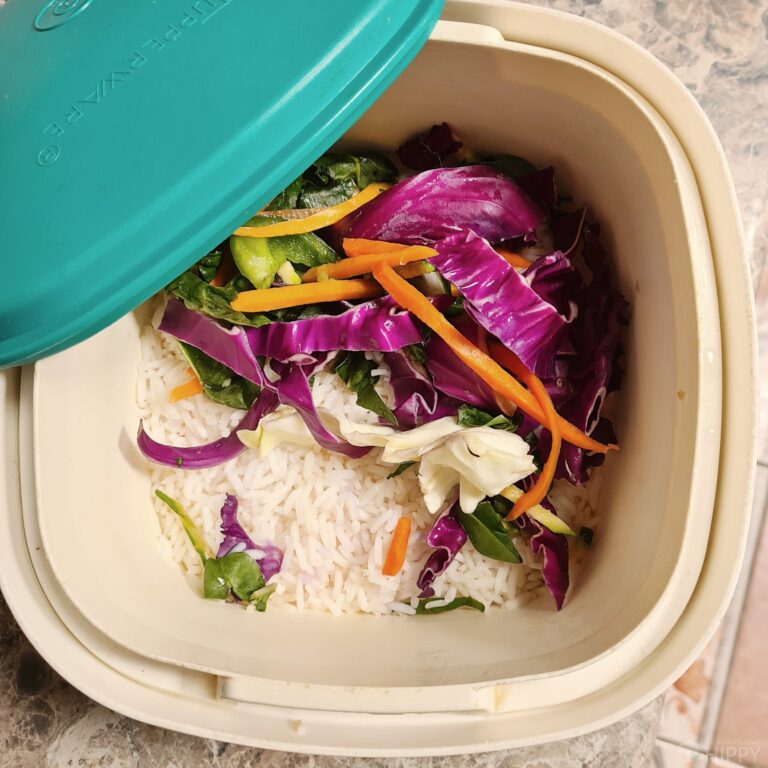
39. Tupperware Rice Cooker
A Tupperware rice cooker cooks more than just rice. It uses boiling water to partially cook food, after soaking in the boiled water for about 30 minutes, the boiling water is drained off and replaced with a small amount of boiling water to steam the food the rest of the way until it is cooked.
You can prepare rice, pasta, vegetables, and (with strategic layering of spinach leaves) couscous. If you like steamed fish or hot dogs, these can also be prepared in the rice cooker.
Pros
- Uses no electricity
- Locks in all the goodness
- Retains all the nutritional value
- Healthy meals
Cons
- If you are doing a full meal, you can only prepare food for three people (if you are only doing rice, you can cook for ten people
- Does not work for thick cuts of meat, red meat, pork, or chicken
40. Portable Power Stations
Many of us use a portable power station and don’t really think of the application of this technology to other areas of everyday life. I am talking about portable, rechargeable external battery banks for cell phones and tablets.
Because of my own disabilities, I have a lot of experience with rechargeable batteries for my mobility scooter and many medical devices.
If we can power up devices, scooters, golf carts, and even cars, why not cook with rechargeable power stations?
Well, now you can! Portable power stations are great for use indoors and outdoors.
The power station can be recharged by plugging it into a power point or by solar charging it.
Harnessing solar energy means that you can recharge your power station anywhere – as long as there is sunlight.
Pros
- Great for use indoors and outdoors
- If you recharge using solar power, your fuel is free
- Does not emit noxious gas
- Attaches to most stoves easily
Cons
- Expensive
- Small stations do not generate enough power for high-power appliance
Conclusion
Whether you are an outdoorsman, environmental conservationist, survivalist, or homesteading hippy in need of a backup cooking source, or if you find yourself in an emergency situation, live in an area where access to electricity is not an option, or you are a social butterfly, there are many ways to cook, steam, grill, roast, fry, and bake off the grid.
However you choose to cook off the grid, there are many methods to prepare food or bake that are cheaper, environment-friendly, convenient for portability, good for rapid or slow cooking, easy to build, and easy to use.
Cooking off the grid can feed your creative side as you experiment with different fuels and different meals while locking in all the flavor and nutrients in your food.
Our distant ancestors have taught us so many ways to cook off the grid. Now, many people are going back in time to lead a simpler lifestyle.
With rising prices of fuel and food, off-grid cooking can cut our daily expenses of electricity.
Cooking with portable cookers and ovens and cooking over open fires using various pots and pans is growing in popularity as people are trying to cut their cost of living and are trying to be more self-sufficient.
I hope this article has been informative and has opened your eyes to all the options that have been hidden in plain sight and improved on over 2 million years.
Let me know in the comments below how your efforts to cook off the grid have gone.
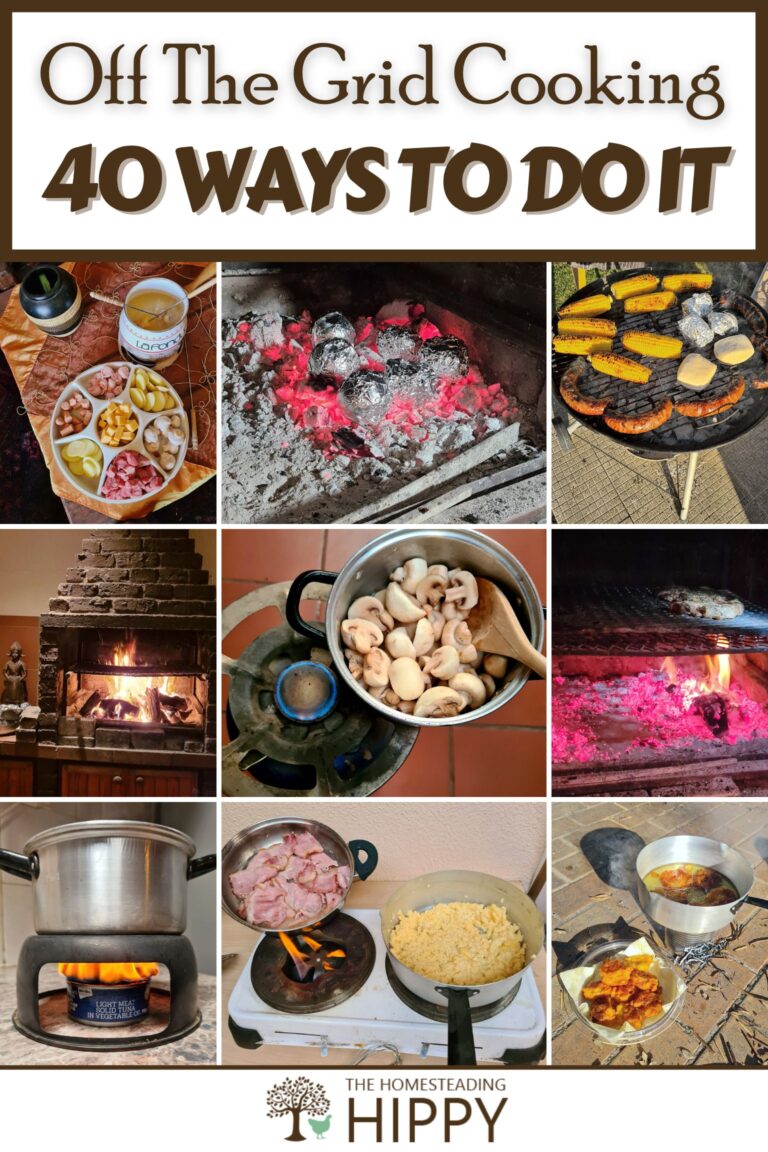
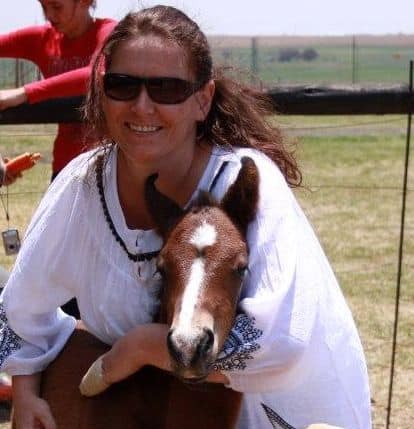
Di-Anne Devenish Seebregts was raised in an environment where daily life consisted of hiking, environmental conservation, growing fruit and vegetables, and raising poultry for meat and eggs.
She combined her passion for the writing word with her love of the pride that comes with not relying on others. She raised three children (who are now adults) to value the environment, and understand the value of being self-sufficient.
Find out more about Di-Anne on our About Us page.

When I was in the US Marines, my job was as a truck driver. In our school, we were taught how to cook our C-rations on the truck engine by wiring the cans to the exhaust manifold. You had to make sure to cut a vent hole first otherwise the cans would explode when overheated. The NCOs would not be amused if that happened.
Later in my military career, when we had switched over to MREs. If we were in the desert, putting the main meal on top of the truck hood or roof usually gave you a sun warmed entree. This was before they started putting the chemical heaters in the MREs. The food rarely got too hot to explode.
A good imagination is a wonderful thing.